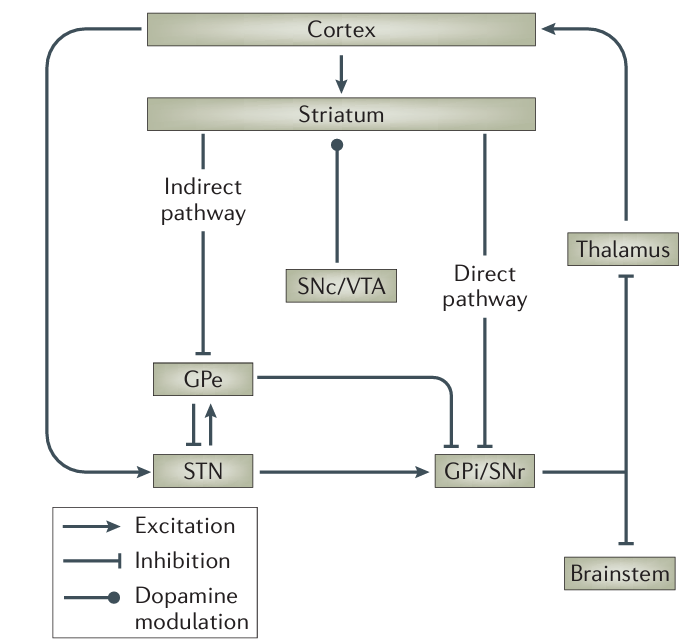Related: Hyperfocus by Chris Bailey, Biological Science MOC
Summary
Habits are controlled more by the basal ganglia, while more complex/cognitively demanding tasks are associated with the PFC
The role of the basal ganglia in habit formation
When you flip on a light switch, your behaviour could be a result of the desire for a state of illumination coupled with the belief that a certain movement will lead to it. Sometimes, however, you just turn on the light habitually, without anticipating the consequences — the very context of having arrived home in a dark room automatically triggers your reaching for the light switch.
Habits are “automatic”
Habits take a lot less attentional space to execute, because they’re heavily mediated by the basal ganglia. The basal ganglia is associated with routine motor patterns, from a dance sequence to making a cup of coffee every morning.
On hypothesis for this reasoning is because “habits” heavily rely on a cue and response. Just like automatically turning on a light switch, an action becomes a habit when the actions regularly occurs after a stimulus. The successful completion of this habit strengthens that circuit and is more likely to be “set off” again when the cue occurs.
Because habits are automatic, they take less “attention” management from us. They might require attention to start, but maintaining it is easy.
neurobiology of the basal ganglia
Studies by Divac and Knorski showed that rats with lesions of basal ganglia could still perform fine movements, but they couldn’t acquire new actions or perform new ones in response to stimuli or potential rewards/threats.
A simplified schematic of basal ganglia connections
